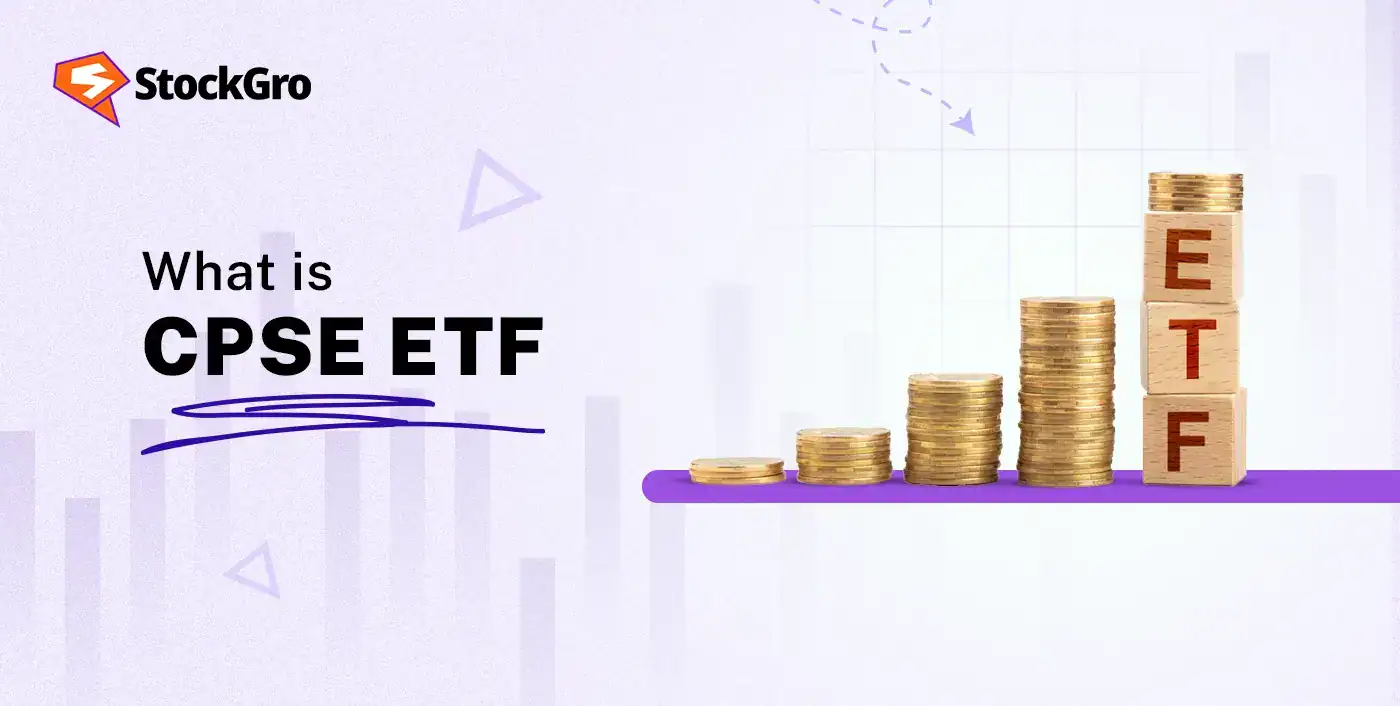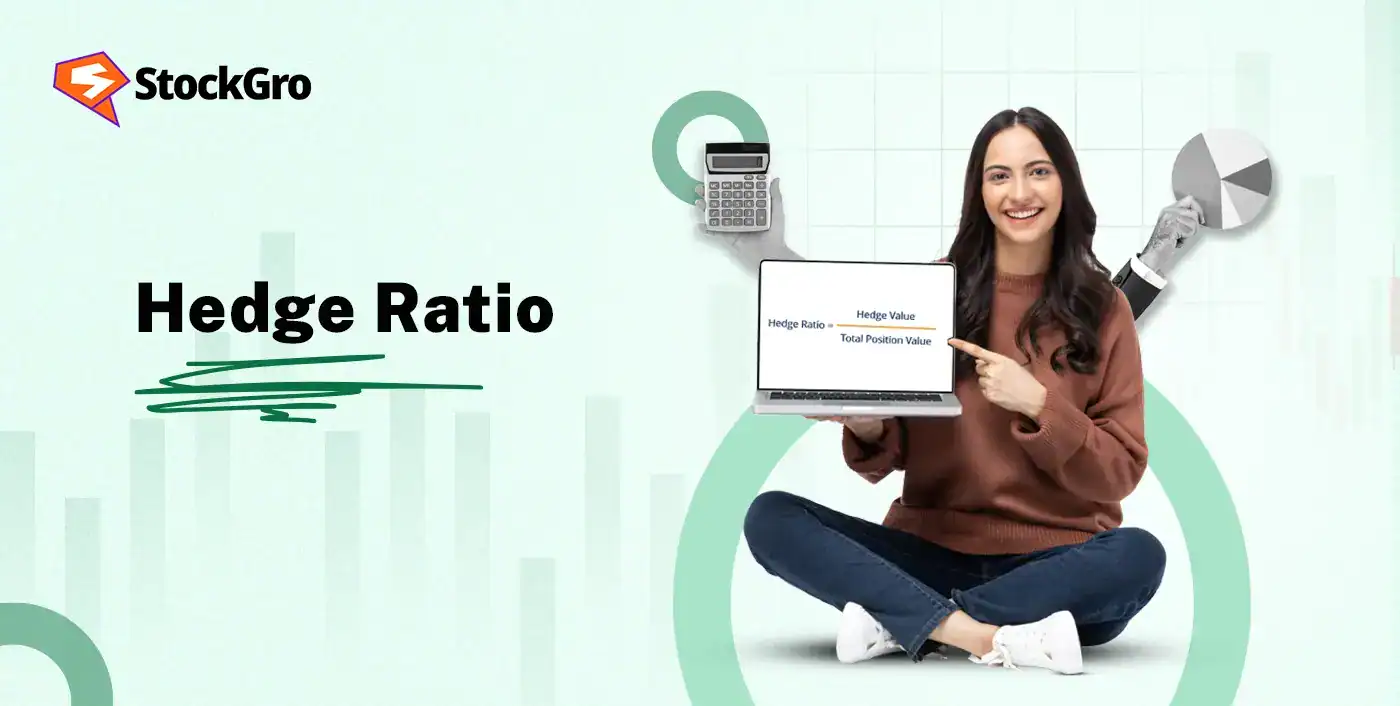
The CPSE ETF has delivered returns of over 40% in the past five years, driven by India’s growing strength in the public sector. This government-backed fund allows investors to participate in the country’s leading Public Sector Units (PSUs) with cost-effectiveness, stability, and liquidity.
This blog discusses what a CPSE ETF is, its benefits, how to invest in a CPSE ETF for long-term growth, and other necessary information you need to know.
What is CPSE ETF?
The CPSE ETF full form is the Central Public Sector Enterprises Exchange Traded Fund. A CPSE ETF is a fund investing in Central Public Sector Enterprises that is passively managed. It offers cost effectiveness, diversification across Public Sectors Units (PSUs), high liquidity, and is backed by governments, which provide stability and a lower risk association.
CPSE ETFs could be influenced by market conditions, economic conditions, sector-oriented risks, government policies, and global events.
Key Features of CPSE ETF
Let’s discuss some CPSE ETF features for a clearer understanding of this fund:
- Passive Management: It is a passively managed fund that acts similarly to the NIFTY CPSE index.
- Diversification: The fund invests in a range of government owned companies like oil, gas, power, and infrastructure.
- Low Cost: This fund maintains a lower expense ratio than actively managed options. As a passive fund, its expense ratio is currently at 0.07%.
- Flexibility & Liquidity: It doesn’t have any mandatory holding period, and investors can buy and sell the ETF units throughout the trading hours.
Benefits of Investing in CPSE ETF
Next, let’s discuss CPSE ETF benefits to see why this fund can be a rewarding addition to a portfolio.
- Stability & Safety: The government ownership and support offers a stable CPSE ETF stock price and security, which drives investment across market volatility.
- Dividend Yields: CPSE ETFs have records of paying high dividends, due to stable revenue flow, in comparison to private sector stocks.
- Growth Prospects: The government initiatives for public sector reforms make it more efficient and profitable, which drives CPSE growth.
- Liquidity: Since this ETF is traded on stock exchanges like a stock, investors can buy or sell it easily, without any effect on the CPSE ETF share price.
How to Invest in CPSE ETF
Here’s a step-by-step guide on CPSE ETF investment and how one can invest in it:
- First, investors need to do some research, conduct stock market analysis, and check which CPSE ETF options suit their profile better.
- Next, open a demat and trading account with a trusted broking platform.
- From there, investors can purchase desirable units of their selected CPSE ETF.
- Most importantly, investors should regularly monitor the ETF performance to keep track of market conditions and strategise accordingly to leverage opportunities for better returns.
Tax Implications of CPSE ETF
Understanding the tax rules on CPSE ETF returns helps investors in better planning and maximising post-tax returns.
- Short-term capital gains from CPSE ETFs are taxable at 15%.
- Long-term capital gains from CPSE ETFs are taxable at 10% with no indexation, if the amount is more than ₹1,00,000.
- The dividend incomes are added to the regular income or are treated as regular income and are taxable according to income tax slabs.
- If the dividend payment for a financial year exceeds ₹5,000, the fund deducts 10% TDS.
Performance Overview
Here’s a snapshot of the CPSE ETF performance, key metrics, reflecting its returns, growth, and overall fund efficiency.
| Fund Category | Equity-Thematic PSUs |
| Launched Date | 28 March 2014 |
| Net Asset Value (NAV) (as on 10 October 2025) | ₹93.77 |
| 5-Years Return | 41.78% |
| 3-Years Return | 38.69% |
| 1-Year Return | -5.4% |
| Asset Under Management (AUM) | ₹32,226.16 Cr |
| Expense Ratio | 0.07% (for regular plans) |
Risks Associated with CPSE ETF
CPSE ETFs could face risks of market volatility, economic conditions, sector oriented risks, government policies, and global events.
- Market Volatility: The performance of CPSE ETF is directly influenced by market fluctuation and economic conditions.
- Shifts in Government Policies: Since the fund invests in government owned companies, changes or shifts in government policies impact performance and prices.
- Sector Oriented Risks: CPSE ETFs investment is concentrated in PSUs, which makes it subject to sector-based risks such as changes in demand and regulatory changes.
Who Should Invest in CPSE ETF
Check whether your profile and investment goals align with the CPSE ETF:
- CPSE ETFs are for investors looking for low-cost, diversified, and passive funds that invest in government-owned companies.
- CPSE ETFs are suitable for investors with a long-term investment horizon, as CPSE ETFs provide significant returns over an extended period.
- If an investor is more focused on earning regular dividend payment, CPSE ETFs could be a good option as it can create a steady income.
- It is beneficial for investors who want to align their portfolio with public sector growth, as it provides opportunities to be part of key public sectors such as oil, gas, energy, and infrastructure.
- CPSE ETFs offer systematic investment opportunities to investors, such as SIPs, driven by low investment requirements and liquidity.
Conclusion: Is CPSE ETF Right for You?
The CPSE ETFs could be a great option for investors with a higher risk appetite and looking for cost-effectiveness and diversification across India’s leading public sector companies. It offers significant long-term growth and steady dividend income.
However, it is right for investors with long-term investment goals rather than short-term or sector-oriented strategies.
FAQs
The CPSE ETF, or Central Public Sector Enterprises Exchange Traded Fund, is a passively managed fund investing in government-owned companies. It offers diversification, liquidity, and stability through investing in India’s leading PSUs.
CPSE ETF includes leading government-owned companies from sectors like oil, gas, power, and infrastructure, such as NTPC Ltd., Power Grid Corporation of India Ltd., Cochin Shipyard Ltd., etc.
Firstly, conduct stock market analysis. Next, open a demat and trading account, select the desired CPSE ETF, and purchase the required units. And regularly monitor performance and market conditions.
Short-term gains are taxed at 15%, long-term gains at 10% above ₹1,00,000, and dividends are taxed as regular income with 10% TDS above ₹5,000.
Yes, the CPSE ETF is more suitable for investors with a long-term investment goal looking for a cost-effective investment in government-owned companies with steady dividends.
It may face risks from market volatility, shifts in government policies, and sector-oriented risks due to concentration in PSUs.
The CPSE ETF is backed by the government, which focuses particularly on Central Public Sector Enterprises, while other ETFs may focus on different sectors or have different backing.

